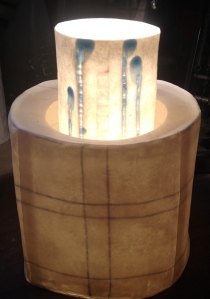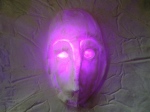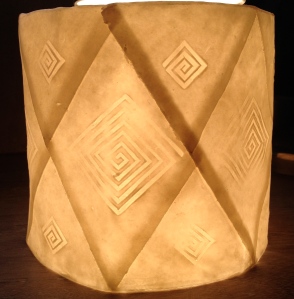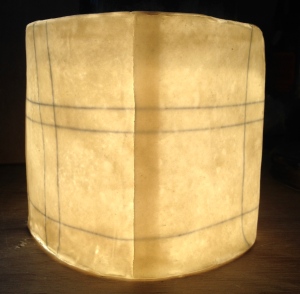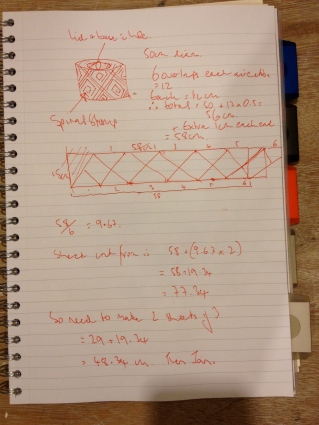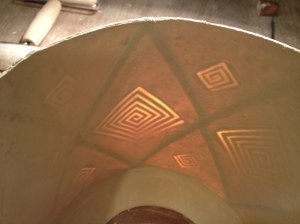2 thrusts to my work this week
- the stuff shown in the penultimate post
- Fibreglass membrane and ppcs. I used cotton soaked in CoBlue, some coloured glass stringers, home made stamps for imprints and the Moire pattern technique referred to in the ideas section. This is achieved using craft stamps with lots of regularly spaced holes. One is rolled on to the setting slip and another slightly offset and rotated, rolled on top. Clean edges are achieved using a piece of thick paper to define them and prevent the moire imprint from coming through. Also did it in layers, a la Sasha Wardell, with same intention. Scraped back when dry with a Stanley Knife Blade. Went for something more organic and less precise with the shapes scraped back.
Amazingly translucent when wet.
The firing was successful The batch where the clay was air heated before rolling came out as expected and has a pleasing randomness about it:

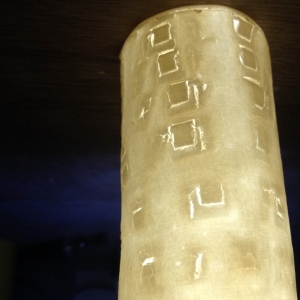
The ppcs pieces were better, especially the one with the Moire pattern on it:


When I showed it to DB he seemed pleased with it. He felt that the pattern gives depth to surface and he liked the cotton line effect. Being a minimalist he felt, and I agree, that it might be better to separate the 2 techniques. The irregularity of the outline is probably unavoidable and he suggested even encouraging it and accepting the limitations of the material. Suggested 2 joins, rather than one, to avoid there being a ‘back’ to the piece. Talked about differently shaped structures, height, width,etc
The layered piece was a curates egg. Again. The clover red colour was over fired and extinguished. The colour was otherwise 2 intense to permit translucency except where it was scraped so thin that the inner scaup blue was almost eroded through to the underlying white.
The test pieces did what they were supposed to

Hand Made Stamps

Various imprints/colouring

Paper with spread colour

Remains of pieces with stringers
The glass will have fluxed the clay – hence the tile broke, but there is potential here.


